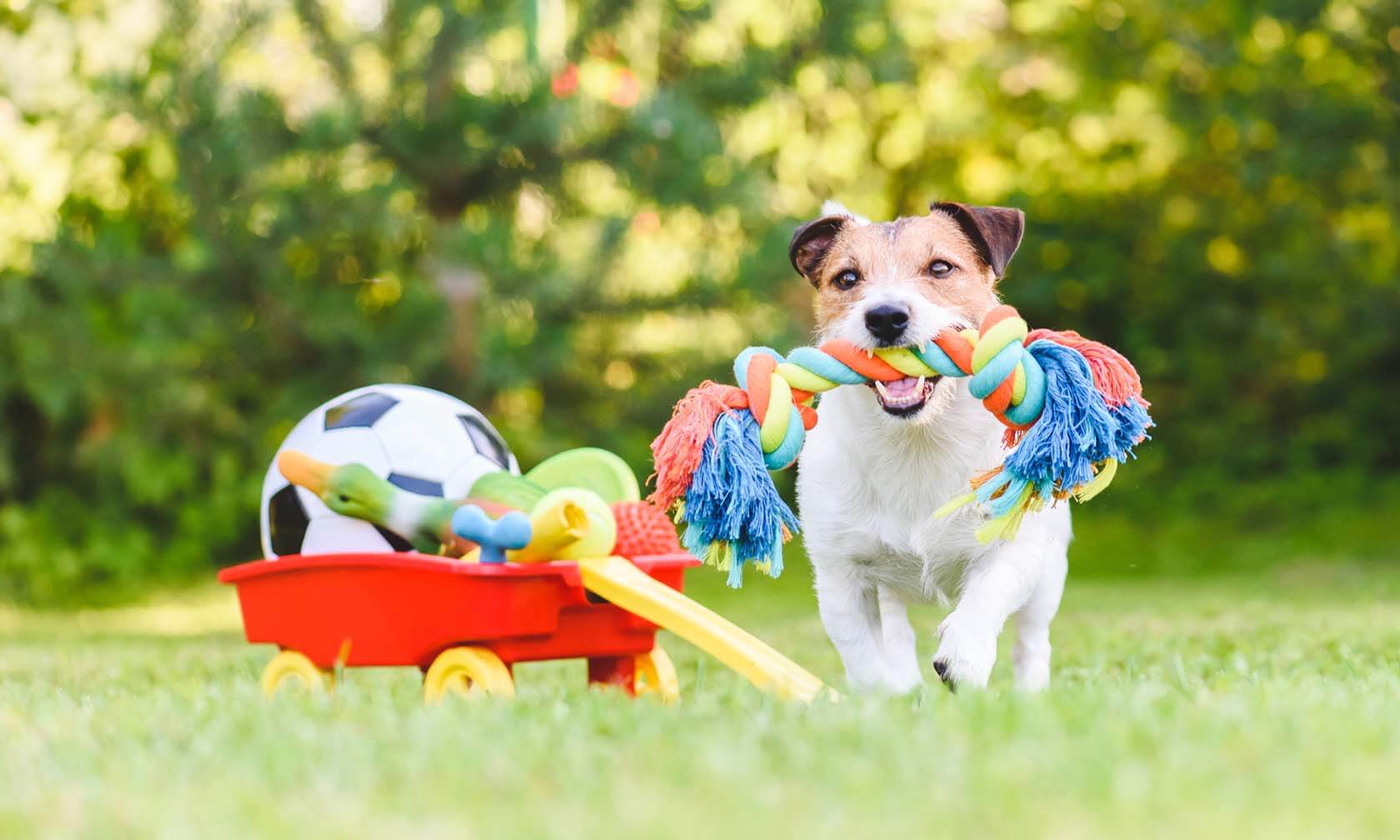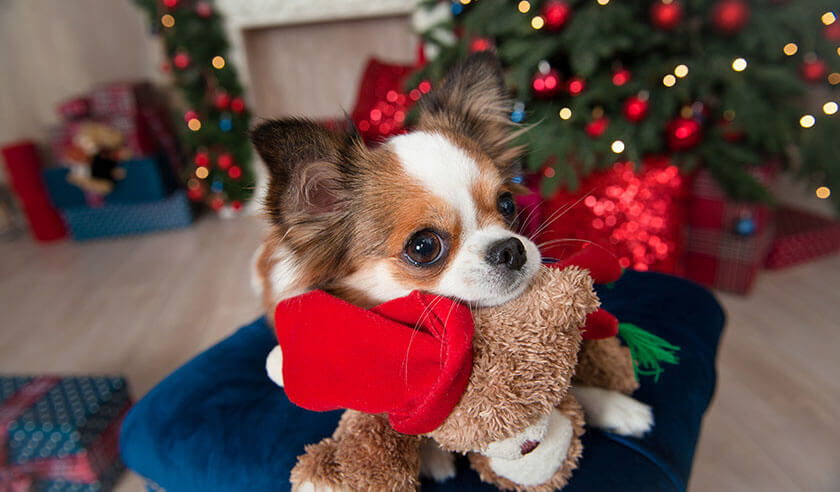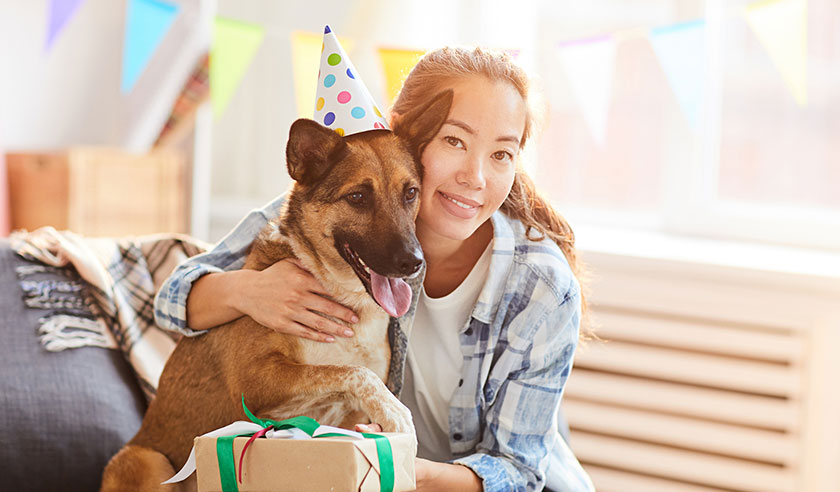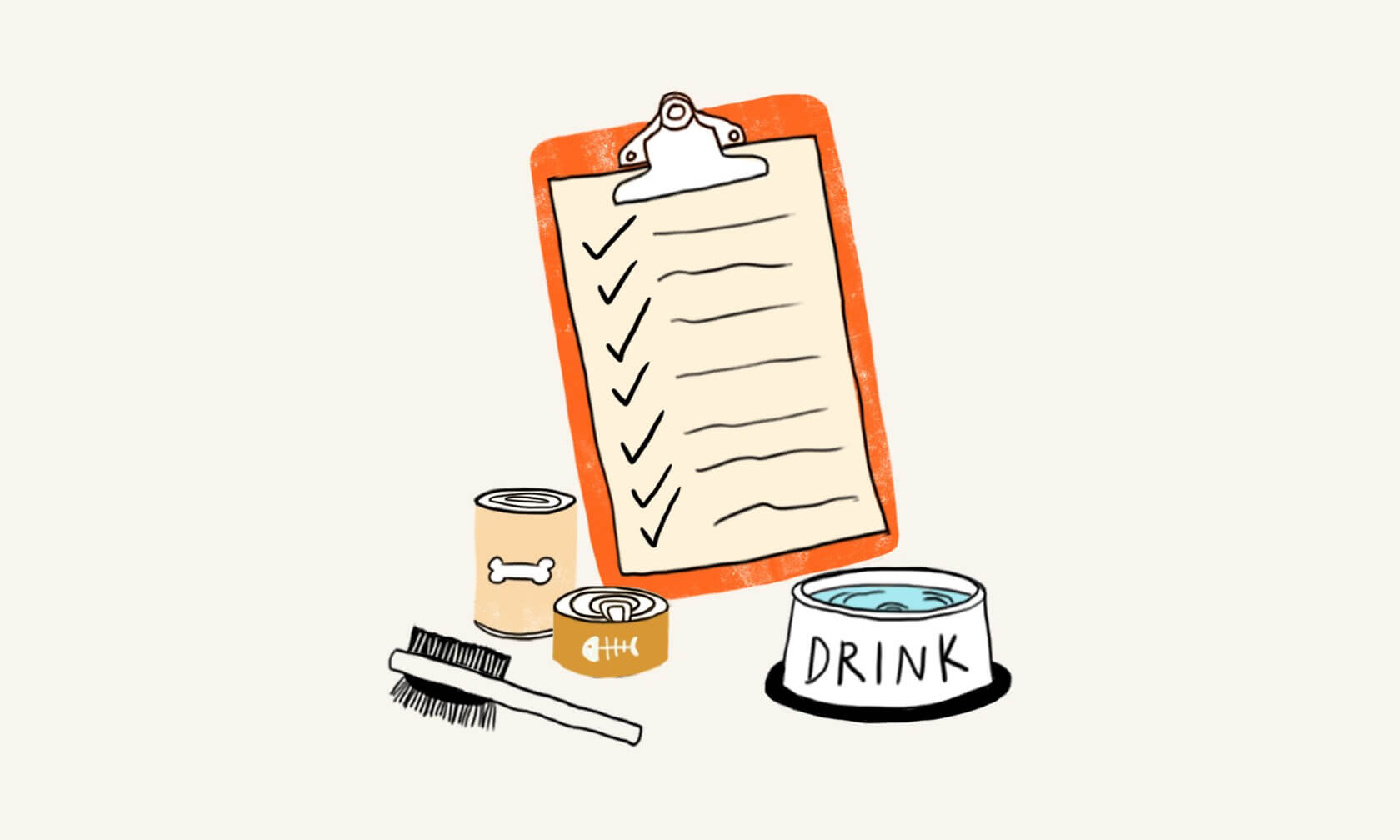It’s a busy time preparing to bring home a new dog with dog-proofing and purchasing all of the new dog essentials. With the number of dog supplies online and at your local pet store, it can be difficult to know where to begin. While each dog has different needs, we put together a list of what to buy for a new dog, broken into the essentials and optional items. Keep in mind that it may take some time to figure out your dog’s preferences.
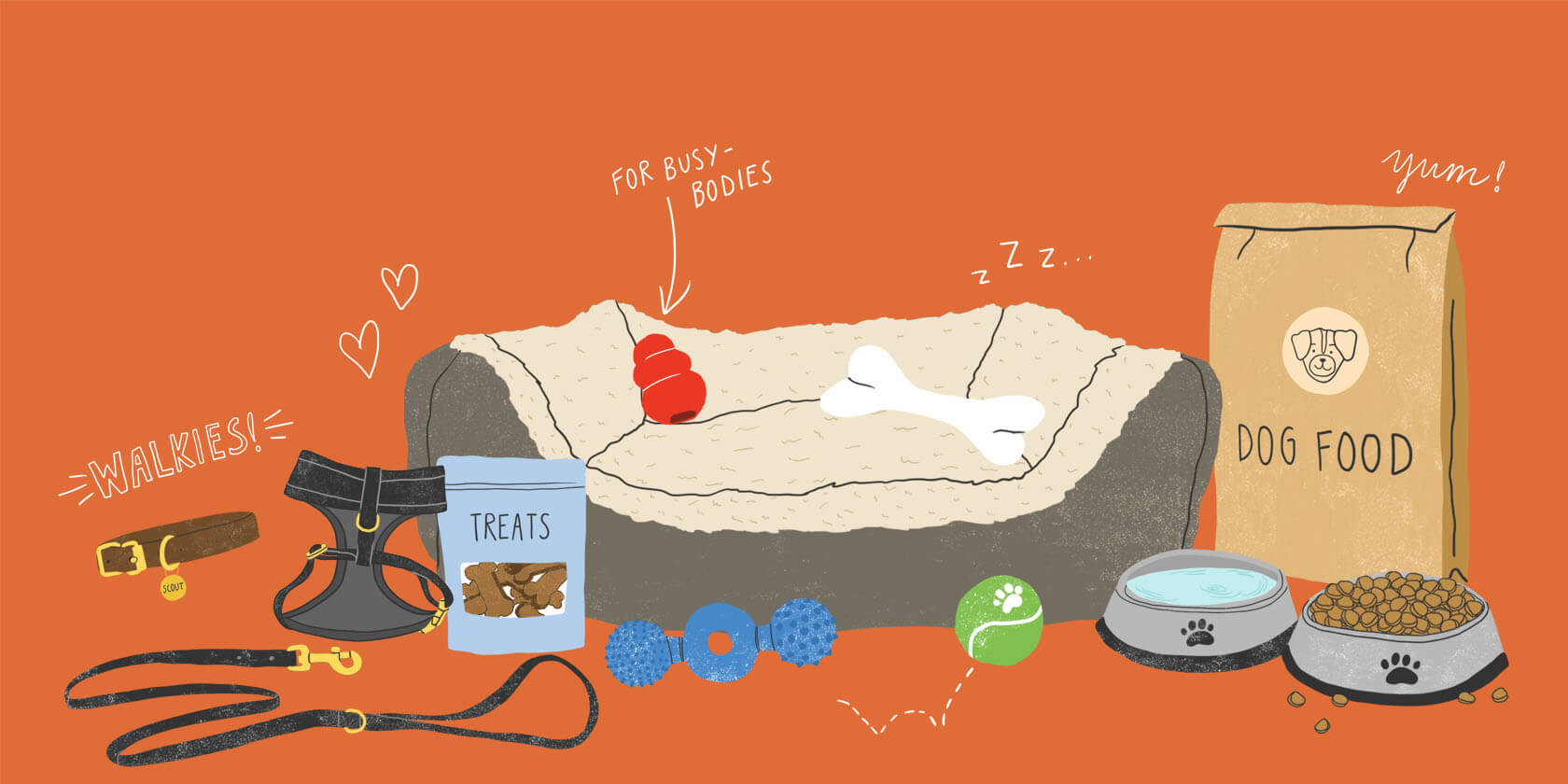
New Dog Essentials
Collar and Harness
Collars come in different width, styles, materials, and colors. A nylon buckle or breakaway style is a great place to start and holds up well in the elements. If your dog pulls on their leash or has certain medical conditions that make it difficult to breathe, consider buying a harness, which keeps the pressure off your dog’s chest and windpipe while walking.
Identification Tag
A tag with your pet’s name along with your phone number and even email address is a necessary addition to your dog’s collar. If your dog gets lost, this is the easiest way to reunite you both. If you move, make sure to update your contact information. In addition, a microchip with up-to-date contact information will ensure that your dog gets home, even if their tag falls off.
Leash
You’ll be surprised at how many styles and lengths leashes come in! A good place to start is a nylon leash around 6 feet, which will help you keep your dog under control. Avoid retractable leashes, which can encourage pulling and cause injury to you or your dog.
Food
Start by purchasing the food that your dog has been eating at the shelter or breeder to give them at least a few days (to a week) of a diet they’re familiar with while they settle into their new home. If you decide to change their diet, make sure to change it gradually.
Food and Water Bowls
Stainless steel food and water bowls are the safest material and are easy to keep clean. Plastic bowls can scratch and harbor bacteria, while ceramic bowls can chip, causing harm to your dog.
Training Treats
Chances are, you’ll want to teach your dog some tricks, or at least reward them for going potty outside. Some dogs are very food motivated, while others are more choosy when it comes to their treats. Find one they love, just make sure to keep treats to less than 10% of their daily calorie allotment.
Chew Toys
Unless you want your furniture or favorite pair of shoes to be ruined, it’s a good idea to supply your dog with a few chew toys for them to gnaw on. Choose safe toys — avoid toys with pieces that can be ripped off and swallowed or ones that don’t pass the fingernail test (Press the toy with your thumbnail. If it doesn’t leave an imprint, it’s too hard for your dog’s teeth and shouldn’t be used.).
Medicine
Visit your veterinarian for refills on any medications that your dog is currently on, including flea, tick, and heartworm preventatives.
Optional Items for Your New Dog
Bed
If you won’t be letting your new dog onto the furniture, a bed is a good addition to your shopping list. Even if they are allowed on the furniture, a bed provides your dog with a space that is all theirs and can help make their transition into your home an easier one.
Interactive Toy or Puzzle
These can be filled with food to help slow down your dog’s eating, to give them mental and physical exercise, and to keep them occupied when you leave the house. Options range from simple fillable toys to more complicated puzzles.
Clicker
A clicker can be a great training tool, no matter your dog’s age. During a training session, use the clicker to immediately and consistently “mark” the behavior being trained. For example, if you want your dog to sit, you’ll click as soon as their bottom hits the ground, then reward with a treat. The click tells them they did something right and the treat is the reward for doing it.
Crate
If you’re planning on crate training your dog, choose a size-appropriate one for them. You’ll want to choose a crate that is big enough for your dog to comfortably stand, turn around, and lay down with outstretched legs. Consult the manufacturer’s size chart to get the right size for your dog. If bringing home a puppy, look for a crate that has an adjustable wall, which allows you to expand the size of the crate as they grow.
ZPC-00594R2
